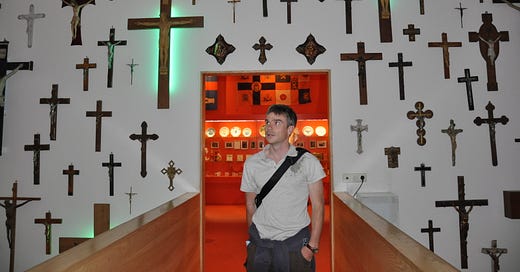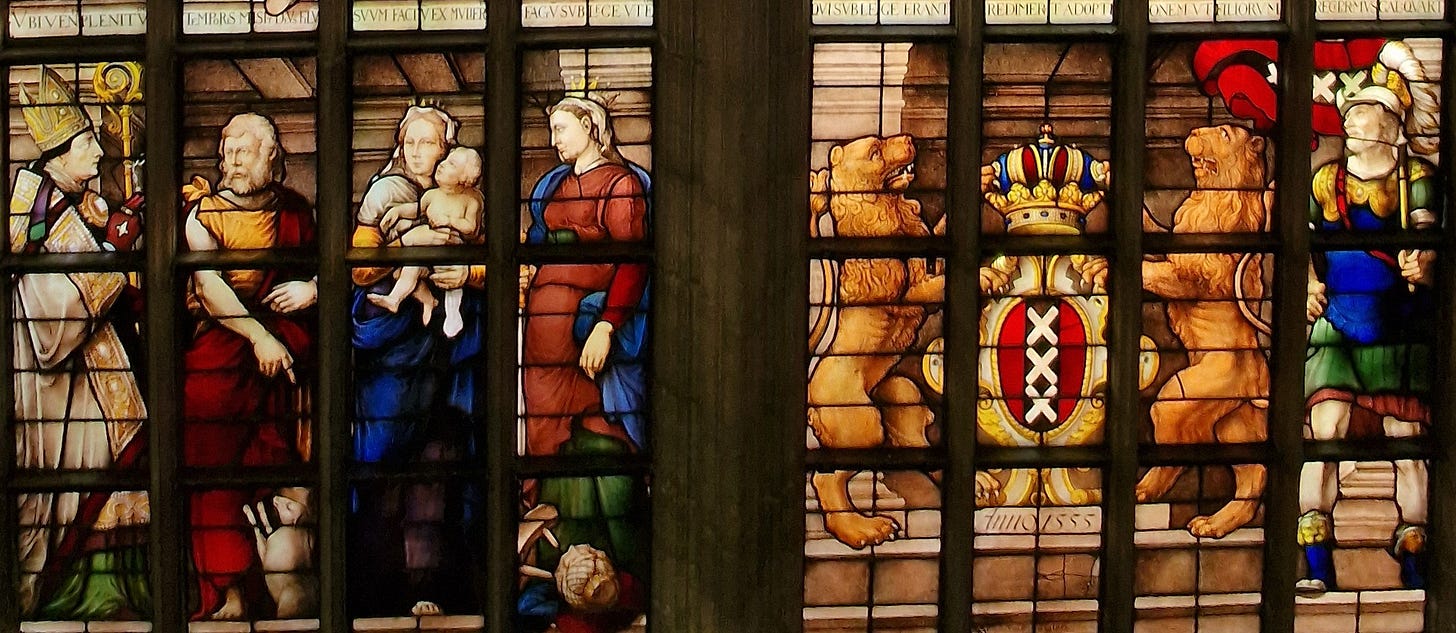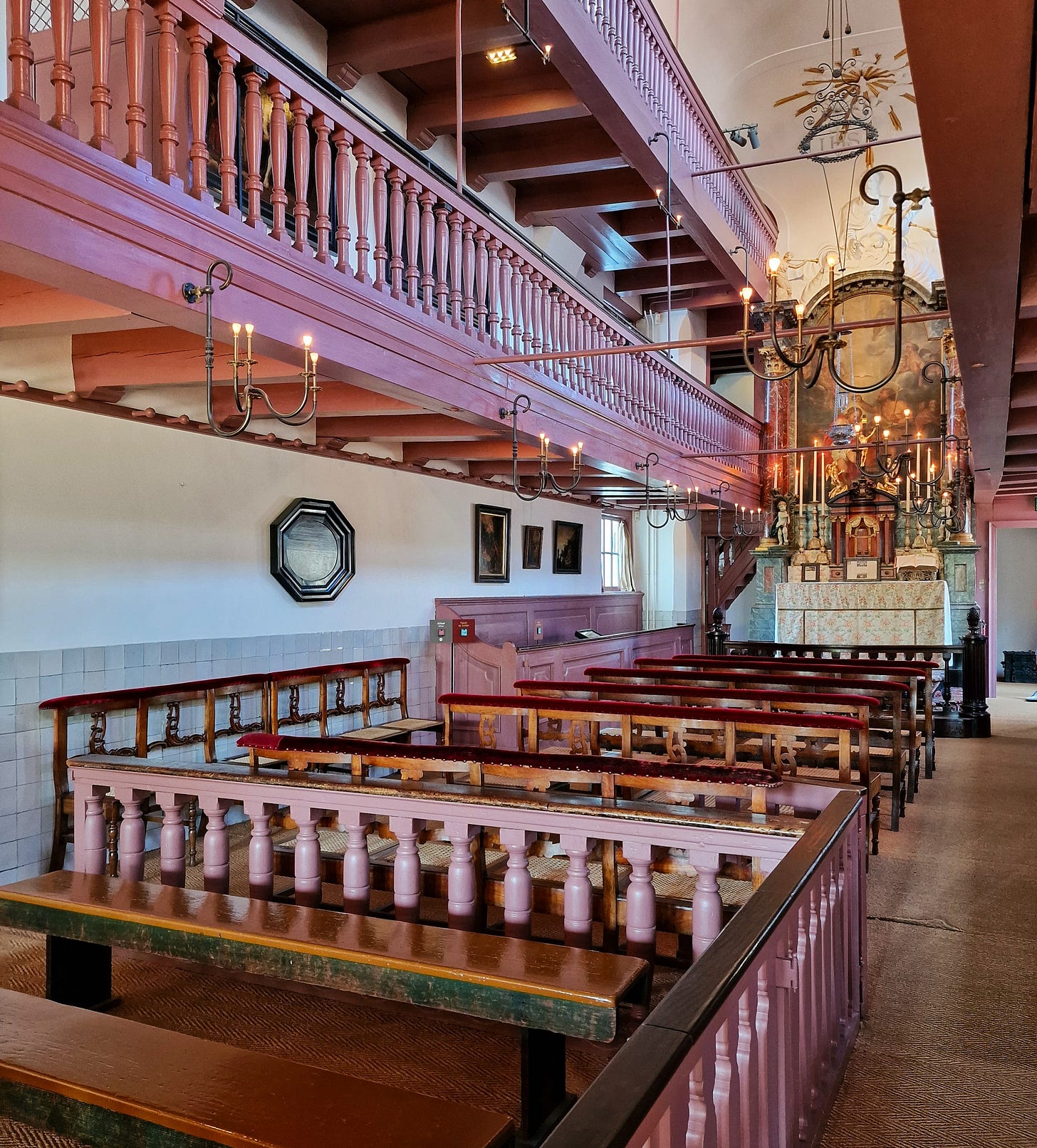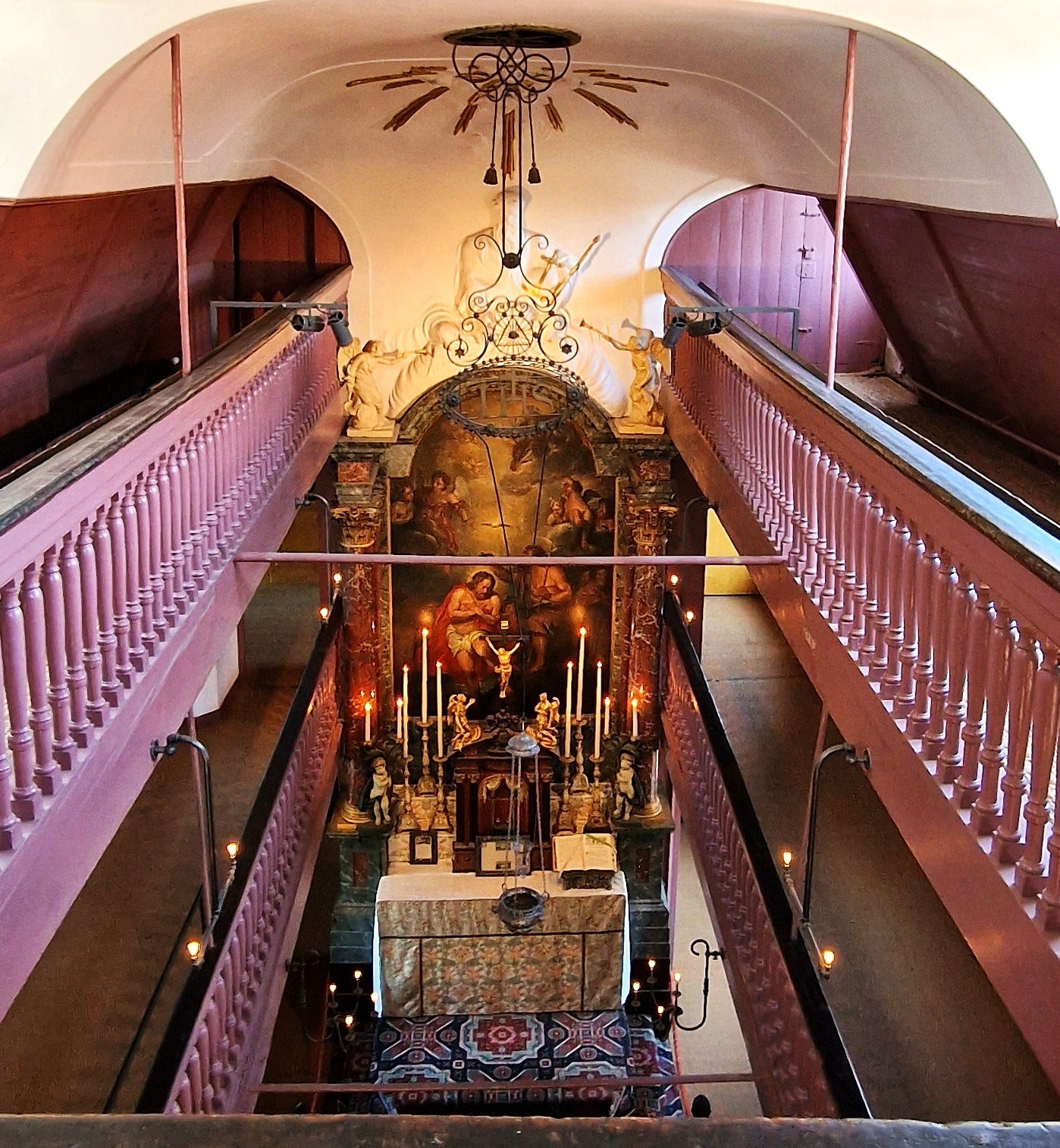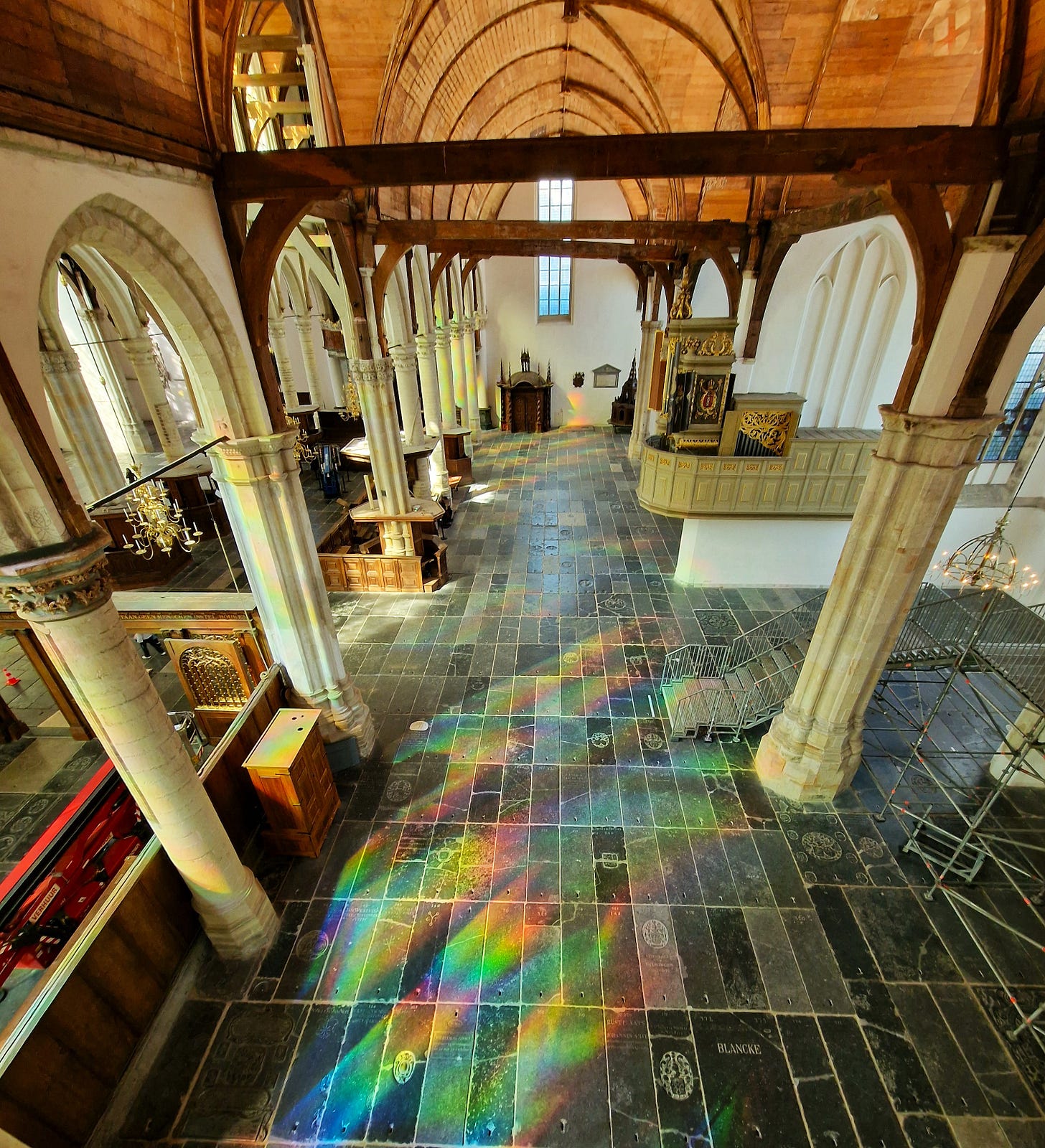As Pope Leo XIV ascends to the throne of St Peter, what better time to take a bit of a look at the Netherlands’ historical relationship with religion and in particular Catholicism. Don’t expect deep theological discussion, we’ll just give you a bit of history and of course some museum action with a visit to Our Lord in the Attic in Amsterdam (Ons' Lieve Heer op Solder).
The Netherlands is today, one of the most secular countries in the world with over half of the population classed by the Dutch statistics bureau in 2021 as ‘Irreligion’ - a word we have just learnt too - but essentially agnostic or atheist. Interestingly, the next major religion after this Irreligion is Roman Catholic (just under 20%), then followed by Protestantism at just under 15%. But the Pope should not be celebrating this win too quickly, as the same stats indicate that Dutch Catholics go to church the least (of the religions in NL) and 1 in 10 Catholics here do not believe in God!
The Catholic history of the Netherlands was fomented, as it did for most of the World with the conquest of the Spanish. Back in the mid 1500s our Iberian overlords took over a large portion of what is today Belgium and much of the southern parts of the Netherlands. The northern provinces, aka the Dutch Republic ceded from this Spanish control and were protestants but typically more accepting to a wide variety of religions.
This Dutch Republic of the 16th century and beyond was indeed tolerant of other religions, but in classic Dutch style there are rules! Worship of these other religions was banned in public, and all Catholic churches in particular were stripped of their finery and peeled back to their basic Calvinist form…however worship in private was allowed. This then brings us to our museum for today - Our Lord in the Attic - a Catholic church that was built inside the private home of a local Amsterdam Merchant, actually in the attic!
Set on a leafy, canal-sided street, head down into the basement area of the museum (look out for a view of the original pilings that hold the house up). After a little video you will ascend into a classic (wealthy) Dutch home of the 17th Century, a museum treat in itself to see how life was back then. A Delft blue clad kitchen with tales of yesteryear, the grand salon, that looks more like a room from a castle and the living room of the family that overlooks the pretty canal street outside.
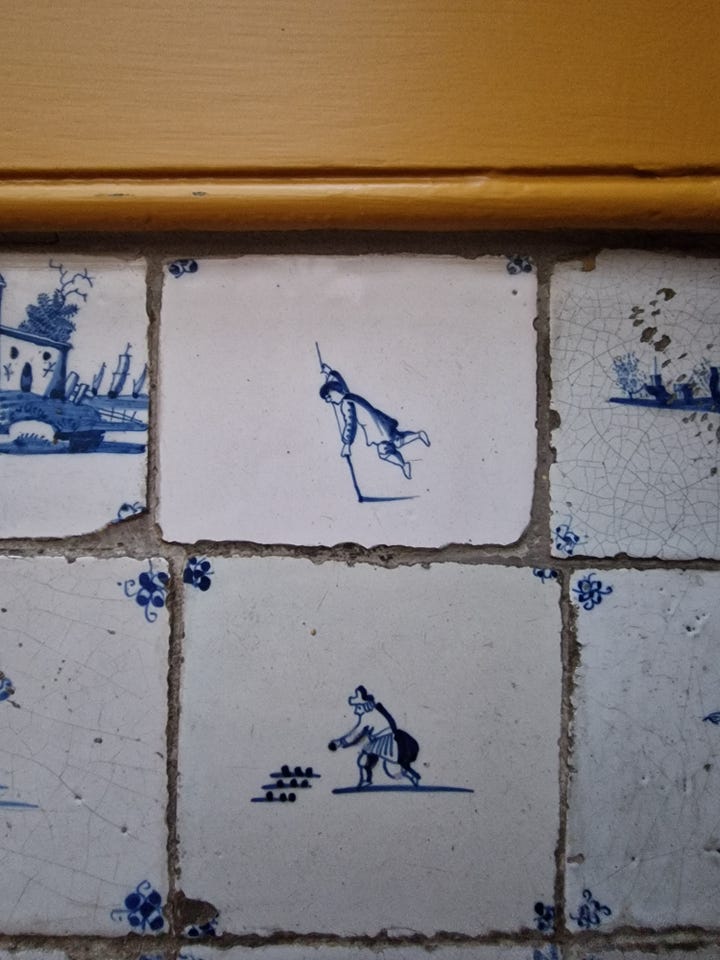

Very much an ordinary house from this period. But as you go further up you’ll spot some more odd signs that would not be in a ‘normal’ house - a bedroom that has internal windows and shutters that could be closed when the worshippers made their way up the stairs for the services, along with a basin for holy water for the dipping of fingers and the sign of the cross.
Up to the attic and you’ll be treated to a wide open space that spans three adjacent buildings and a quite beautiful church interior, complete with pews and space for a hundred congregants, a full sized altar, and even the latest organ technology (for the 17th century!).
The church ascends another 2 levels with balconies that each give a great perspective on the space.
At the highest floor also take a look outside the windows at the views across the rooves of Amsterdam where you can spot all the various other (protestant) churches that are ganging up on this Catholic sanctuary.
For those protestants reading this, don’t fear, just down the road from our Lord of the Attic you can find safe haven in the Oude Kirk, Amsterdam’s oldest building, dating all the way back to the 13th century. Originally a Catholic Church, it was ‘re-purposed’ during the Dutch reformation to a Protestant church. In keeping with the population of the country, it now serves neither religion and is home to contemporary art. The expansive and austere space is certainly impressive, but you’ll probably agree that good things come in small packages when you just come from our little attic church.
The Oude Kirk has a beautiful wooden ceiling, one of the largest musical organs in Europe, and when we visited just recently, some maintenance in the church allowed aerial access to the massive stained glass windows…usually requiring pictures at an abnormal angle, but for once up close to all their glory. The Chapel of the Holy Sepulchre also has an interesting light scheme that takes on all the more significance when you realise that we are on the edge of Amsterdam’s red light district!
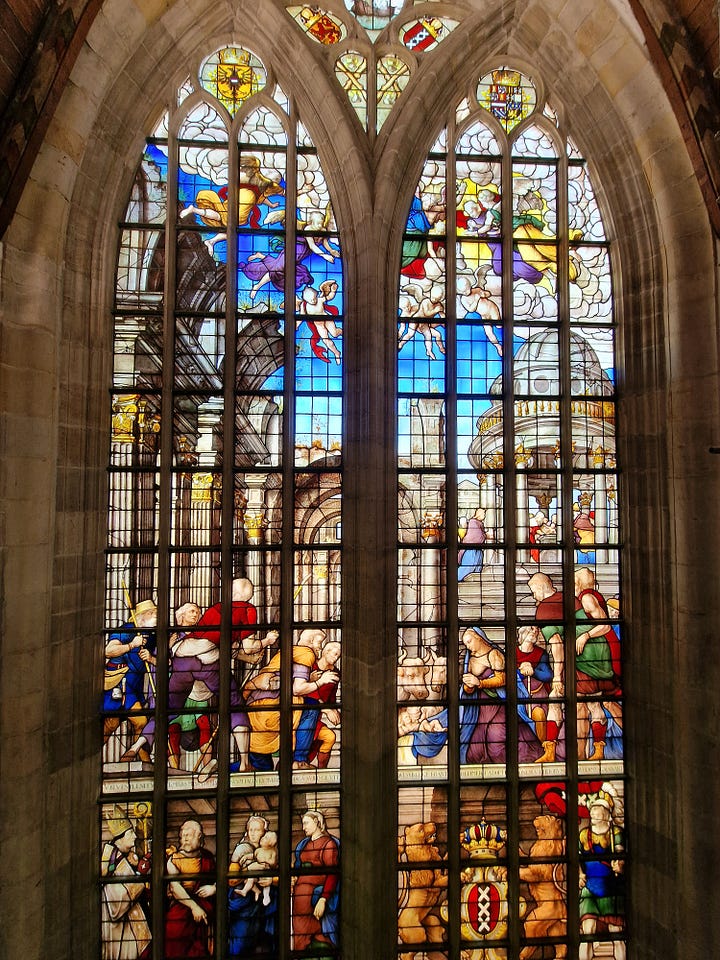
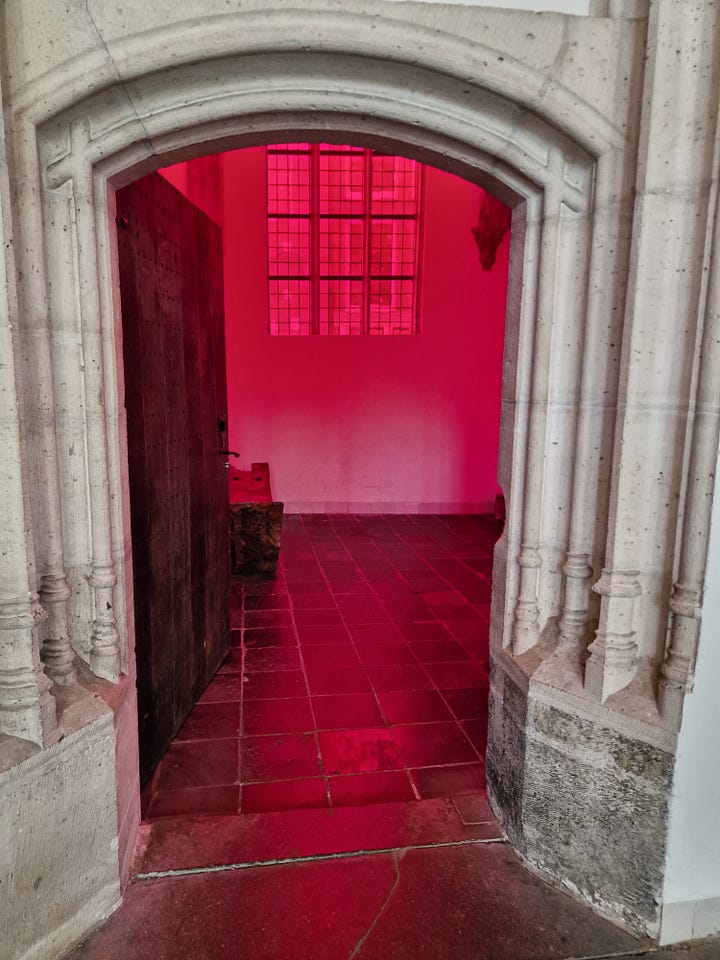
So when you are next in Amsterdam make sure you stop by these houses of worship and experience how all this wonderful history has shaped the Amsterdam we have today, enjoy!
